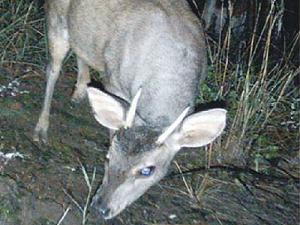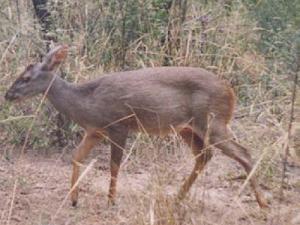Maria E Periago
Other projects
18 Jul 2007
Effect of Overgrazing and Deforestation on Grey Brocket Deer Comunities in an Arid Sector of the Chaco Region in Argentina
31 Jul 2009
How are Gray Brocket Deer, Mazama Gouazoubira, Populations Affected by Different Land Use Practices in the Arid Chaco of Argentina?
The aim of this project is to validate a method for estimating the population density of the grey brocket deer in the Chancaní Reserve, Córdoba, Argentina.

The arid portion of the Chaco region in Argentina is highly degraded dueto years of over exploitation. The desertification process is particularly marked in the Chaco Árido of Córdoba and La Rioja provinces. Among the key factors that unravel this desertification are overgrazing and fire. This degradation has important consequences on the biodiversity, with obvious economic and social impacts.

The effect of the degradation of the ecosystem on the fauna has yet to be evaluated, and very little is known about the densities of vertebrates in their natural areas, as well as population attributes. Therefore, the abundance of the brown brocket deer in the argentine Chaco is unknown and there is growing concern for the status of the population, in part, due to the state of the ecosystem, as well as the growing hunting pressure on the species. The aim of this project is to validate a method for estimating the population density of the grey brocket deer in the Reserve. This will constitute a management tool for monitoring the populations within this protected area, as well as in similar habitats.
The techniques that will be used have been validated in other geographic areas, for this species as well as other cervids, but there exists the need to re validate them for this portion of Argentina. More specifically, the population density will be estimated through pellet counting. Information concerning home range, defecation rate and daily action patterns of the species in its natural habitat will also be studied. The results of this study are expected to serve as a first count of the species´ density in Chancaní Reserve, and to provide more knowledge about the biology of the species in protected areas.